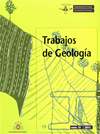Abstract
Resumen: Este trabajo despunta la relevancia histórica de una cantera que estuvo situada próxima al barrio de La Argañosa, al oeste de Oviedo. Su actividad ya consta en el primer cuarto del siglo XV, suministró –al menos desde 1517– piedra calcárea para la construcción de parte de la Catedral, y su declive no se produjo hasta bien avanzado el siglo XX. Explotó tanto calizas como arenas y arcillas del Cretácico Superior (formaciones Oviedo y La Argañosa); estos materiales se utilizaron para erigir en la ciudad diversas infraestructuras y edificaciones singulares, entre las que destacan varios palacios barrocos.
Palabras clave: Cantera histórica, piedra natural, patrimonio arquitectónico, calizas, arena, arcilla, Cretácico, Oviedo.
Abstract: This work stands out the historical significance of a quarry that was located near the neighbourhood of La Argañosa, to the west of Oviedo. Its activity is known from the first quarter of the fifteenth century, it supplied –at least from 1517– calcareous stone for the construction of a part of the Cathedral, and its decline did not occur until the twentieth century was advanced. There were exploited limestone, sand and clay from Upper Cretaceous age (Oviedo and La Argañosa formations); these materials were used to build several exceptional buildings and infrastructures in the city, among which are several baroque palaces.
Keywords: Historical quarry, natural stone, architectural heritage, limestones, sand, clay, Cretaceous, Oviedo.

